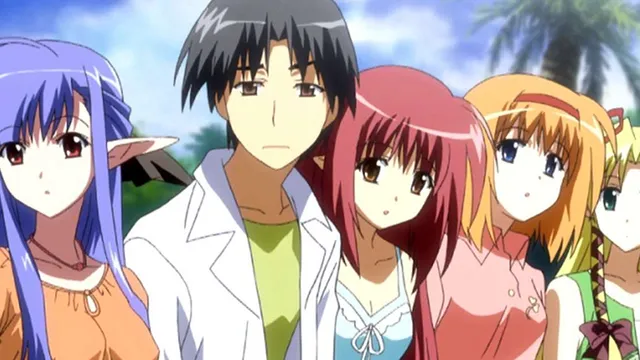
The Rise of the Harem Cult: Exploring the Phenomenon and Its Cultural Impact
The term “harem cult” may evoke different ideas depending on one’s cultural background or knowledge of media. It can bring to mind historical notions of harems—where rulers housed multiple wives or concubines—or it may resonate with fans of anime and other modern entertainment forms, where the term has taken on new meanings. However, in recent years, “harem cult” has gained traction as a modern concept with roots in both cultural imagination and evolving social structures.
In this article, we will explore the various meanings behind the term “harem cult,” examining its historical context, the psychological elements that appeal to followers, and how it has woven its way into the fabric of modern entertainment and society.
What is a Harem Cult?
Historically, the word “harem” comes from the Arabic word haram, meaning forbidden or sacred, and was often used to describe the secluded quarters of women in a household, particularly in Islamic royal or noble families. In many ways, the word became synonymous with polygamy, power, and control, as these rulers often had multiple wives, concubines, or slaves.
In modern times, however, the term “harem” has been appropriated in new ways, particularly within certain entertainment genres like anime, manga, and video games. In these genres, a “harem” typically refers to a single male protagonist surrounded by multiple women who are romantically or emotionally interested in him. This modern use of the word has led to the creation of what can be referred to as the “harem cult.”
The “harem cult” has a dual-layered meaning today. On one level, it refers to fan communities deeply engaged in the “harem” genre of entertainment, where they become obsessed with narratives and characters, often taking part in online forums, fanfiction, and related activities. On a deeper level, the term “cult” refers to an almost obsessive following of a particular cultural construct, not unlike other subcultures that revolve around niche interests.
Historical Context and Evolution
The idea of a “harem” is rooted in the historical practices of polygyny, where powerful men—emperors, kings, or sultans—would have multiple wives or concubines to display power, wealth, and status. These harems were not just places of sexual indulgence; they were political centers where women could wield significant influence. In many royal courts, the harem was a complex institution involving politics, hierarchy, and even education for women.
With the rise of modern entertainment, particularly in Japanese manga and anime, the concept of a harem was reimagined. Instead of being an institution bound by historical and social forces, the modern harem narrative became centered around romantic fantasies. Typically, in such stories, a male protagonist becomes the object of desire for multiple female characters. These stories, ranging from light-hearted romances to more sexually explicit content, captured the imaginations of fans across the globe, sparking what we now term the “harem cult.”
Characteristics of the Harem Cult in Modern Media
The modern interpretation of the “harem cult” can be seen in the rise of specific anime series, visual novels, and games that center around a central character with multiple love interests. Popular anime series like Tenchi Muyo!, Love Hina, and High School DxD showcase this trope, where the protagonist inadvertently attracts a group of female characters who compete for his affection.
Key characteristics of the harem cult phenomenon include:
- Romantic Conflict: The main plotlines often involve the male protagonist navigating his relationships with several female characters, each possessing distinct personalities, backstories, and desires. These interactions are filled with humor, drama, and conflict, which captivate fans.
- Fan Engagement: The “harem cult” often includes highly engaged fan communities. Fans become emotionally invested in the characters and may even “ship” certain characters together (favoring romantic pairings). Fans create forums, write fanfiction, and even cosplay characters at conventions, solidifying their involvement in this subculture.
- Escapism: One of the psychological drivers behind the popularity of harem narratives is escapism. Many of the protagonists in these stories are ordinary people who suddenly find themselves the object of multiple affections. This plays into the fantasy of wish-fulfillment, allowing fans to project themselves into the story as the protagonist.
- Commercial Influence: Harem-based anime and manga have significant economic potential, leading to various spin-offs, merchandise, and even dating-simulation games. The harem cult has extended beyond traditional media into interactive experiences, making it a lucrative genre.
Psychological Factors Behind the Appeal
The harem cult’s popularity can be attributed to several psychological factors. First and foremost, the idea of being desired by multiple people taps into a fundamental human desire for affection, validation, and significance. In a world where social interactions are often complex and isolating, the harem narrative provides a simplified version of social and romantic relationships.
Furthermore, many fans of harem media identify with the underdog trope. The male protagonist is often portrayed as an average, if not underachieving, person who suddenly finds himself in a fantastical situation. This resonates with viewers who may feel undervalued or overlooked in real life. The “harem” concept offers a form of wish-fulfillment, where the protagonist’s luck turns around, and they are thrust into a situation where they are important and desired.
The community aspect of the harem cult also plays a significant role. Being part of a fandom provides a sense of belonging. Fans gather in forums, chat rooms, and social media platforms, where they share theories, art, and writing about their favorite characters or plotlines. This collective engagement further strengthens the “cult-like” following that the genre has developed.
Criticism and Controversy
While the harem cult has many fans, it’s not without its critics. Some argue that the genre perpetuates problematic stereotypes, particularly regarding gender dynamics. The male-dominated narratives, where women vie for the attention of a single man, can be seen as reinforcing traditional gender roles that are limiting and even objectifying.
Others raise concerns about the unrealistic portrayal of relationships. The simplification of complex human emotions into clear-cut romantic interests can lead to misguided ideas about how relationships should work. Critics argue that the harem genre often fails to provide a balanced perspective on romance, focusing instead on fantasy-driven wish fulfillment.
Finally, there’s the issue of commercial exploitation. While the genre undoubtedly has economic potential, some worry that the over-commercialization of the harem cult undermines genuine creativity. As the genre grows more formulaic, with similar tropes appearing in multiple series, the question arises: is this still about storytelling, or has it become a marketing machine?
Conclusion
The rise of the harem cult is a fascinating example of how modern media shapes and reshapes ancient concepts for new audiences. What began as a historical institution has evolved into a modern phenomenon driven by fan engagement, psychological appeal, and commercial success. While the harem cult provides entertainment and escapism for many, it also raises important questions about the portrayal of relationships and gender roles in media.
As the harem cult continues to grow, its influence on pop culture and social structures will likely deepen, offering new narratives and evolving the way we think about romantic and social interactions in a globalized world.



